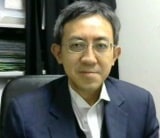World Geostrategic Insights interview with Hei Sing Tso on how ancient Chinese thoughts and stratagems influence current Chinese diplomacy and military strategy, and the role of stratagems in China’s “One Belt, One Road” initiative and in China’s strategic approach and actions aimed to reunify Taiwan and manage confrontation with the United States.

Hei Sing Tso is a political commentator on Hong Kong, Taiwan, China and international affairs; Independent researcher, fiction writer; Lawyer at Tso & Associates; Expert and Consultant on Stratagem and Connections, author of the book “I Ching & 36 Tricks – Your Personal Wisdom Manual”.
Q1 – The thoughts and philosophy of Sun Tzu, the famous fifth-century B.C.E. Chinese general, together with those of the ancient Chinese collection of stratagems and strategies for dealing with military conflicts, known as the “36 stratagems,” have permeated Chinese culture in politics, negotiations and business behavior since time immemorial. In Chinese history, the victors in military, political and commercial battlefields have been considered those who skillfully used stratagem. The practice of stratagem is closely linked even today to the daily behavior and dealings of the Chinese people. Stratagems take on connotations of military, diplomatic, political and commercial deception, use of psychological means and devising ingenious plans to confuse the opponent and win without a fight. You are the author of the book “The Ching and 36 Tricks – Your Personal Wisdom Manual.” How do you define a ruse? Are deception and trickery necessary to win?
A1 – If one wants to understand China’s strategy and strategic wisdom, it is necessary to know the Book of Changes (I Ching). The I Ching is the original source of all traditional Chinese thoughts, including philosophy, medicine, martial arts, feng shui, etc. According to I Ching, the macro and micro universe are each composed of Yang and Yin, polar and opposite forces or energies. However, Yin and Yang form a dialectical totality. Yin includes Yang and vice versa. Chinese strategic thinking is not limited to Sun Tsz. Most foreign scholars are rarely familiar with Chinese Strategism (Mou Lue “謀略”).
In my view, the founder of Chinese strategism is Guiguzi, who is also the founder of the Chinese School of Vertical and Horizontal Alliances (also known as the School of Diplomacy). Guiguzi was a polymath with knowledge in various disciplines. A stratagem can be defined as a highly abstract tactic or method or wit that can be applied at different levels of the battlefield, from personal, organizational, state or even international politics. A stratagem is used to defeat the enemy, but also to solve problems, because the “problem” is also an “enemy.” According to I Ching, Yang means obvious and hard, while Yin means hidden and soft.
The Mou Lue (stratagem) tradition influenced by Guiguzi emphasizes the Yin part of the universe, similar to Taoist philosophy. This is also reflected in the strategy of victory without war advocated by Sun Tzu. Chinese thinkers believe that hidden, mauve, invisible knowledge is superior to obvious, hard, physical weapons on the battlefield in a relative way. Moreover, if Yang is common, conventional, Yin is surprise and creativity. Formal strategy and cunning must be used in a complementary way. Third, Yin and Yang form a dialectical relationship. Formal strategy can become trickery and trickery can become formal strategy. It all depends on the situation and the moment.
Q2 – Stratagem was mainly a tool of war and diplomacy. In the past decade, China’s foreign policy has tried to use the concept of “soft power,” promoting its interests without resorting to military force, applying Sun Tzu’s teaching in the Art of War: “Subduing the enemy’s army without fighting is the very pinnacle of excellence.” What are the main features of current Chinese military strategic thinking? What role do stratagems play in Chinese diplomacy?
A2 – Regarding current military thinking, we need to know the tradition of grand strategy in China’s history. In the past, China’s security concern was to preserve the integrity of its borders and periphery. A strong defense to deter invasion from outside is a perfect option. The construction of the Great Wall is an example of this. Therefore, the projection of military power over long distances across the globe, like the United States and the United Kingdom in the past, will not be the case in China’s contemporary military thinking. Defense of borders, coastal areas and exclusive economic zones are the main military concerns. Another military concept is unrestricted warfare.
For the Chinese, war is not just about hard weapons. War can be fought in different areas, such as diplomacy, economics, intelligence, and even litigation. Although this term is new, it is totally in accord with Chinese holistic and integrated thinking. Stratagem is always present in Chinese politics and diplomacy. Stratagem is different from strategy. Stratagem does not need to be expressed. It is an unspoken way of thinking in decision making. Stratagem has been used in the past, in the present and will continue to be used in the future.
Q3 – Based on the principle of winning without fighting, Chinese decision-makers seem to apply stratagems and detour to achieve their goals, pursuing the achievement of strategic objectives also through the application of “qi” or what is unorthodox in battle or conflict, as Sun Tzu states, “In general, in battle one engages with the orthodox and achieves victory with the unorthodox.” In 2013, the Chinese government laid out a new strategic plan, known as the Silk Road Economic Belt and 21st Century Maritime Silk Road, or simply “One Belt, One Road”. Can this plan be considered a stratagematic approach to economic development and expansion of China’s economic influence in the world?
A3 – From a stratagematic point of view, One Belt One Road is a great stratagem for China. The ancient Chinese stratagem master Guiguzi orally transmitted a series of tricks known as (72 tricks of change) as a legacy. Trick No. 22 is known as “Flying and grasping to defeat the enemy.” Flying and grasping means creating a power situation to deal with the power situation of the enemy. In essence, it means using different kinds of methods and approaches to create a new “power situation.”
The new situation will become an invisible cage that blocks the enemy. If the enemy moves to the right, we attack the left, making the enemy subject to our manipulation and control. In the current case, China intends to create a new power situation using the One Belt One Road initiative. This is to counter any economic and strategic challenges from the United States and its allies. De-dollarization is just one example of countering action.
Q4 – What is your opinion on China’s current policy toward Taiwan? Can you note the influence of the Thirty-Six Stratagems on China’s strategic approach and actions to reunify the island and manage confrontation with the United States?
A4 – In essence, China will not launch a full invasion on Taiwan only under two conditions: (1) Taiwan seeking independence or (2) foreign occupation of Taiwan. China wants to have a harmonious environment to facilitate its OBOR economic strategy. Certainly, unification remains an ultimate goal for China. It is impossible to discuss all the stratagems that have influenced Chinese policy, as the issue is complicated and changeable. Different stratagems may be used on different occasions. As a general approach, China today adopts one trick among 36 stratagems: “Be comfortable, wait for tiredness.” When China’s economic prosperity increases further, exchanges between China and Taiwan will deepen, the difference between the two political institutions will narrow, Taiwan’s population will draw closer to China, and negotiations for peaceful unification between the two sides will become feasible. China feels comfortable, waiting for Taiwan’s fatigue.
The confrontation with the United States is certainly the key to managing China’s policy toward Taiwan. I believe that China can adopt one of the 36 stratagems, “Going from guest to host” in dealing with the United States. Currently, the U.S. is still the main supporter (including the supplier of military weapons) of Taiwan. The U.S. is now in a dominant position over China in this fighting relationship. Using this ploy, China needs to bridge any gap and, step by step, reverse the relative position with the United States. China wants to transform itself from Host to Guest. This is a long process to weaken all ties between the United States and Taiwan. Moreover, this struggle will cross several military, economic, political and diplomatic fronts.
Hei Sing Tso – Political Commentator, Lawyer, Expert and Consultant on Stratagem and Connections, author of the book “I Ching & 36 Tricks – Your Personal Wisdom Manual“.








